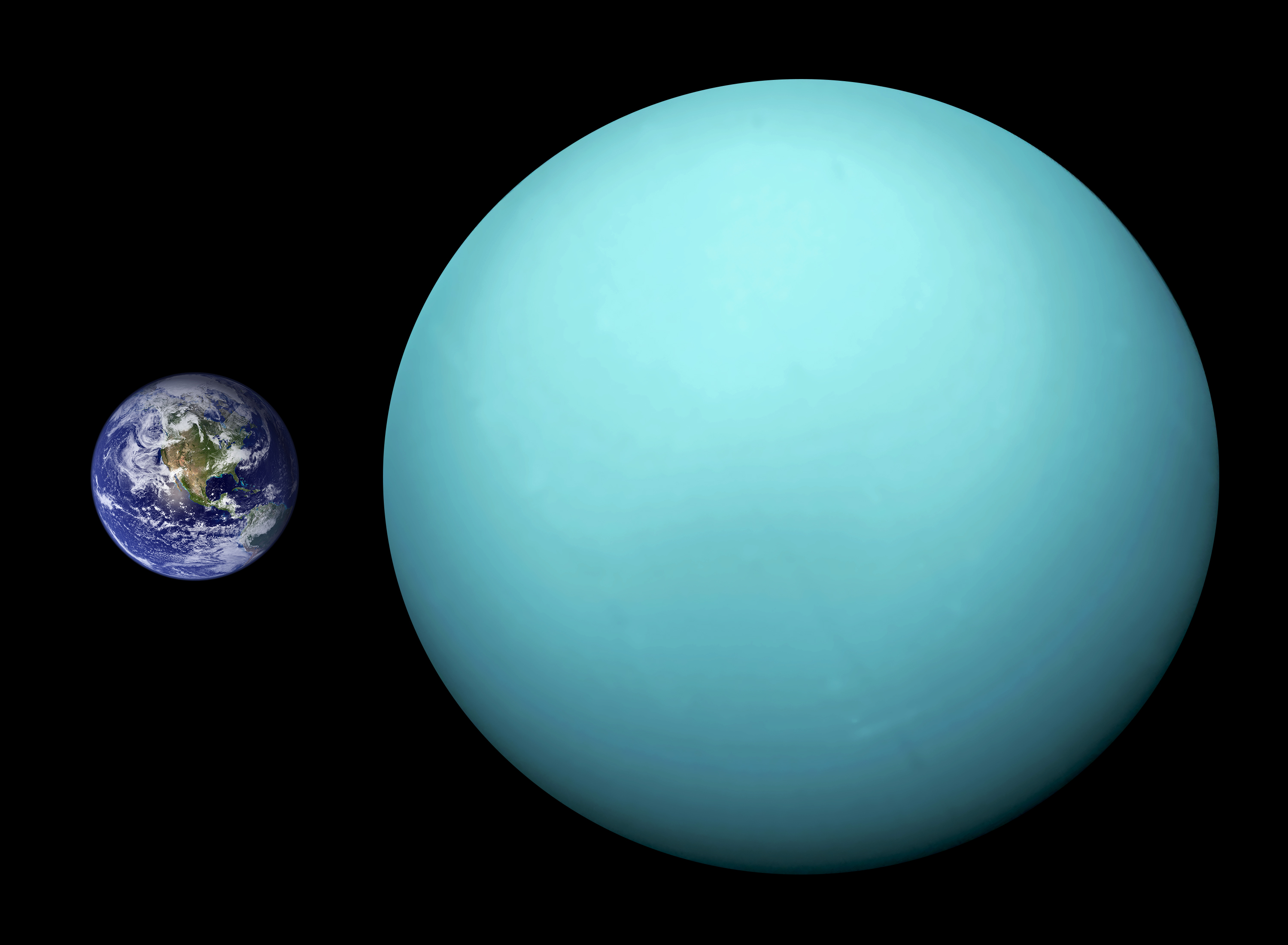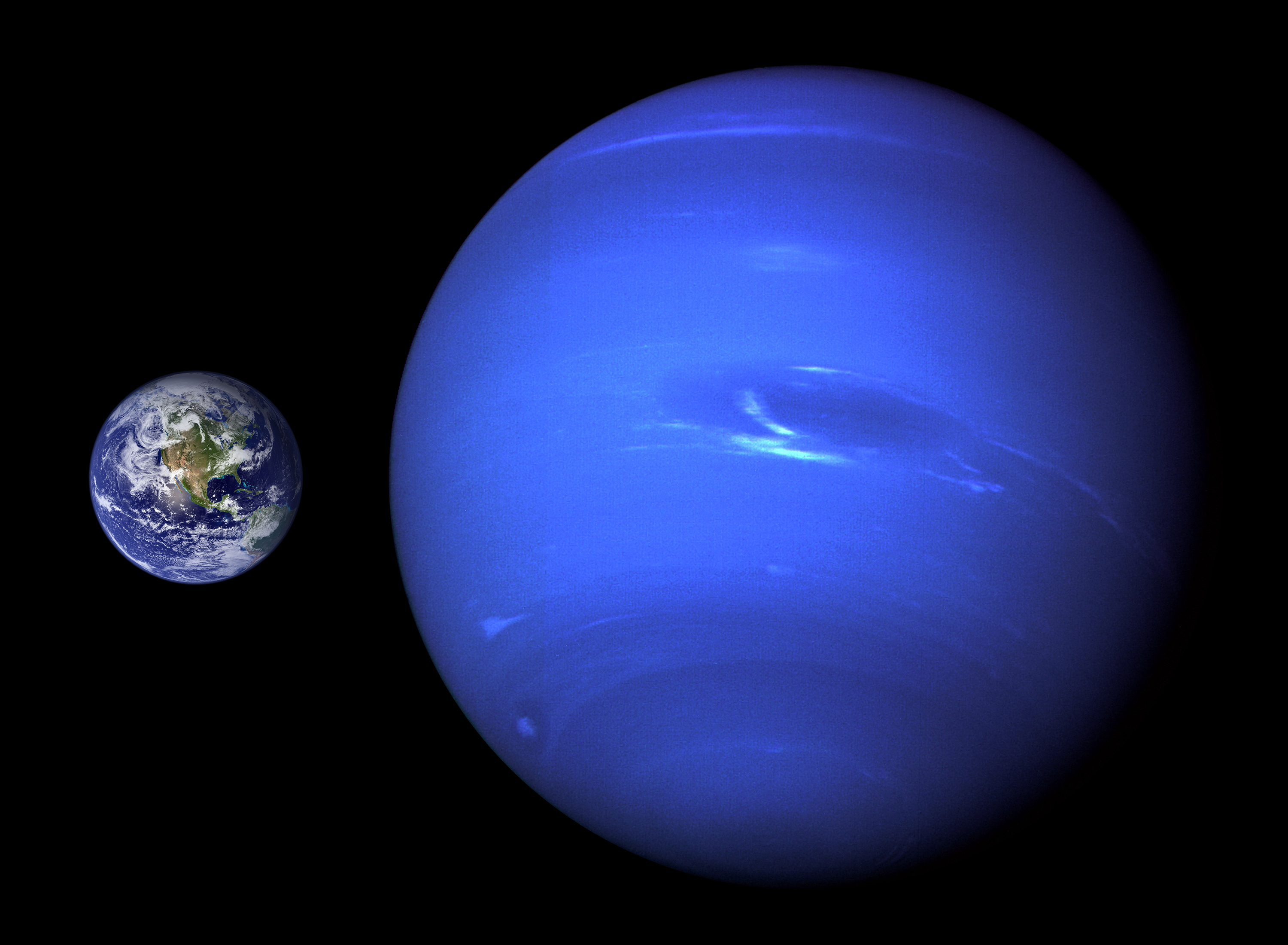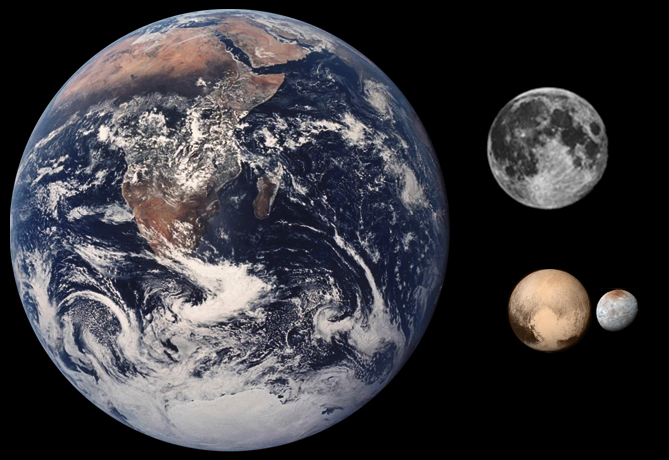

| Visitors Now: | |
| Total Visits: | |
| Total Stories: |

| Story Views | |
| Now: | |
| Last Hour: | |
| Last 24 Hours: | |
| Total: | |
How Big Are The Outer Planets In Our Solar System?
Question posed by Milo.
The outer planets of our solar system are Jupiter, Saturn, Uranus and Neptune*. Respectively, their average diameters are (roughly) 140,000 km, 120,000 km, 51,000 km and 50,000 km.
But if you’re anything like me, those numbers are far too big to really mean anything. So lets compare them to something: home. The Earth’s average diameter is something in the region of 13,000 km. Knowing this fact, we can talk about the sizes of other things in terms of how much bigger they are than Earth. This is actually a trick that’s often used by astronomers to help to make sense of things: stars are often spoken about in terms of how many times heavier they are than our own Sun; the Astronomical Unit is a way of talking about distances in terms of how many times further away from the Sun something is than Earth.
 |
| By Brian0918, via Wikimedia Commons |
Jupiter
Using the figures above, the solar system’s largest planet, Jupiter, is roughly 11 times wider than Earth is. See the image to the right for an idea of what this might look like, and imagine the consequences if Earth was really that close to Jupiter… Also notice how the Earth would fit inside the Great Red Spot (if we were unlucky enough to get that close)!
 |
| By Brian0918, from Wikimedia Commons |
Saturn
From the above values, the sixth planet from the Sun, Saturn, is around 9 times wider than Earth and, although smaller than Jupiter, still makes us look puny. Here’s another picture for comparative purposes, taken on one of Earth’s touring holidays of the solar system [it wasn't really...] - Mars was holding the camera [it wasn't really...]. Note that the value for Saturn’s diameter does not include the rings!
 |
| By Brian0918, via Wikimedia Commons |
Uranus
Next on Earth’s whistlestop tour of the outer planets is Uranus. It is, from the numbers at the beginning of this post, about 4 times the diameter of Earth. You can see in the picture to the right that Uranus isn’t as scarily big as Jupiter and Saturn are compared to Earth, but you still wouldn’t want to pick a fight with it. I don’t need to mention that Earth and Uranus aren’t anywhere near as close as they appear to be in this comparison. But I will anyway.
 |
| By Brian0918, from Wikimedia Commons |
Neptune
Uranus’s only-just-little brother Neptune is just a bit less than four times the size of Earth, in terms of average diameter, which is still big, but I’m always surprised at how not-big it actually is. It’s a pretty colour, too. Here’s a picture to help the comparison along – aren’t I good to you? And yes, Earth and Neptune are nowhere near as close to each other as this holiday snap [it isn't really a holiday snap...] would suggest: imagine how fast our orbit would have to be if we were!
 |
| By NASA, via Wikimedia Commons |
Oh, go on then.
I know Pluto’s not a planet, but we love it anyway, and it’d be a shame not to visit when we’re this far out already. Pluto’s just a little more than 2000 km across – it’s smaller than Earth’s Moon – meaning that Earth is about 6 and a half times as big. In the image, Pluto is the light silvery-looking one towards the lower-right hand side. The smaller blob next to it is its moon, Charon.
* Remember, Pluto’s not a planet!
Blogstronomy: answering YOUR space questions.
Source:


